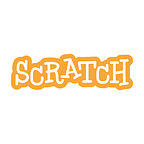Scratch in Practice: Creative Connections in Science, Social Studies, Language Arts, and More
By Natalie Rusk
Since our team first launched Scratch, we’ve been excited to see students creating interactive projects to explore and express ideas spanning a wide range of subjects. Sometimes a whole class will make projects around a topic, such as making games about ancient Egypt, modeling the water cycle, or creating animations of haiku. Many students also take the initiative to design and code animations, games, or simulations to share what they’ve learned or dive deeper into a topic that interests them. (You can see examples of a variety of student projects in this studio.)
A group of middle school students changed my view of the periodic table of elements, from the dry topic I remember from chemistry class to a source of creativity and collaboration. Each student had chosen an element of the periodic table and made a Scratch project to highlight what they found most interesting about it. For example, in a project called Sulfur, the element sulfur tells its story, and you can hear two students’ voices as they share what they’ve learned in an animated conversation.
We’ve been inspired seeing how many educators have integrated Scratch into their curriculum in meaningful ways. In this video, you can hear how teachers around the world are using Scratch to support student learning across a variety of topics, from the life cycle of butterflies to cities of the future.
Research has shown that students make deeper connections to concepts when they apply those ideas in the process of making Scratch projects. A study by researchers at Florida State University examined what middle school students learned while creating math games in Scratch. The study found that the students developed significantly more positive attitudes toward mathematics after making their own games.
Of course, it takes time for students to develop fluency in coding with Scratch — just as it takes time for students to develop fluency in learning to write. But the investment of time and energy pays off. The more often students have the opportunity to create with Scratch, the more fluent they become. In the process, students not only gain a deeper understanding of important concepts, they also develop a broader range of skills, from creative thinking and problem solving to communication and collaboration.
Visit the Scratch in Practice site to explore other ways students can use Scratch to express ideas across subjects!
Natalie Rusk is Director of Learning Research for the Scratch Team. She is one of the creators of the Scratch programming language and is lead author of the Scratch Coding Cards.
